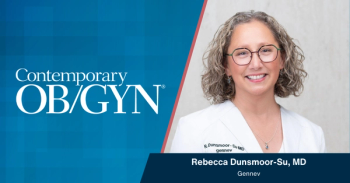
A Discussion of Natural Hormones
An excerpt from the Menopause & Perimenopause Ask the Expert column
An excerpt from the Menopause & Perimenopause
Q: I am an Ob/Gyn and patients are asking me for "Natural Estrogens" and natural progesterones for HRT. They understand the studies are not as complete as other HRT medications but desire to stay away from Premarin. Could you please discuss these medications and their use in HRT?
A: The request for "natural hormones" is nearly universal. But there is a lot of misunderstanding regarding this idea. What is natural? Compounds derived from nature? Or compounds from pharmaceutical companies that are structurally similar to hormones produced by the ovaries?
Premarin is a mixture of many compounds, estrogens progestagens and even androgens. It is derived from the urine of pregnant mares and contains mainly oestronsulphate but also equilines that are natural for horses but not for women. The estrogen activity of equilines is about the same as estradiol. So no difference in activity but difference in source.
Natural estrogens (in women) are estradiol and estron. Micronized estradiol is a very popular prescription in Europe. With oral ingestion of estradiol, the estradiol is converted in the intestine to estron and absorbed as such and during the passage through intestine and liver most of it is converted to estronsulphate. Estronsulphate is the pool for the active compound estradiol. So, no difference in the end result with estronsulphate tablets and micronized estradiol. Is estronsulphate now a natural estrogen or not?
In premenopausal women the estron:estradiol ratio is about 1. With oral estrogen medication there are much higher levels of estron than estradiol. Is this natural? With transdermal estrogens, estradiol is absorbed through the skin and partly converted to estron. The ratio estron:estradiol is about 1, just as before menopause. This looks much more natural than all other ways of administration.
The same is true with progesterone. The only natural compound is progesterone. But this is absorbed very poorly both in the intestine and through the skin. Nowadays we have special products with micronized progesterone with a reasonable absorption pattern (Prometrium). This product is expensive and high doses are needed, and can cause sedative or hypnotic side effects. Because of the rather bad properties of progesterone in the early days, progestagens were developed with the same activity as progesterone, and several other activities. These are not natural progestins.
Progesterone is also developed in a vaginal cream with good absorption pattern (Crinone). The natural progesterone creams (very popular among women) give no measurable progesterone levels in serum and are not protective for the endometrium.
Herbal remedies for perimenopausal symptoms is something for believers. The use of herbal remedies can be compared with religion. No proof, but many know for certain that it works. As an obgyn specialist in gynecology, I limit my comment to proven remedies. Only with red clover (and only with one brand, Promensil) a proof of benefit for hot flushes exists. When you wish an overview of non-western medicine you have to consult an alternative practitioner.
Please check-out these great articles:
Newsletter
Get the latest clinical updates, case studies, and expert commentary in obstetric and gynecologic care. Sign up now to stay informed.











